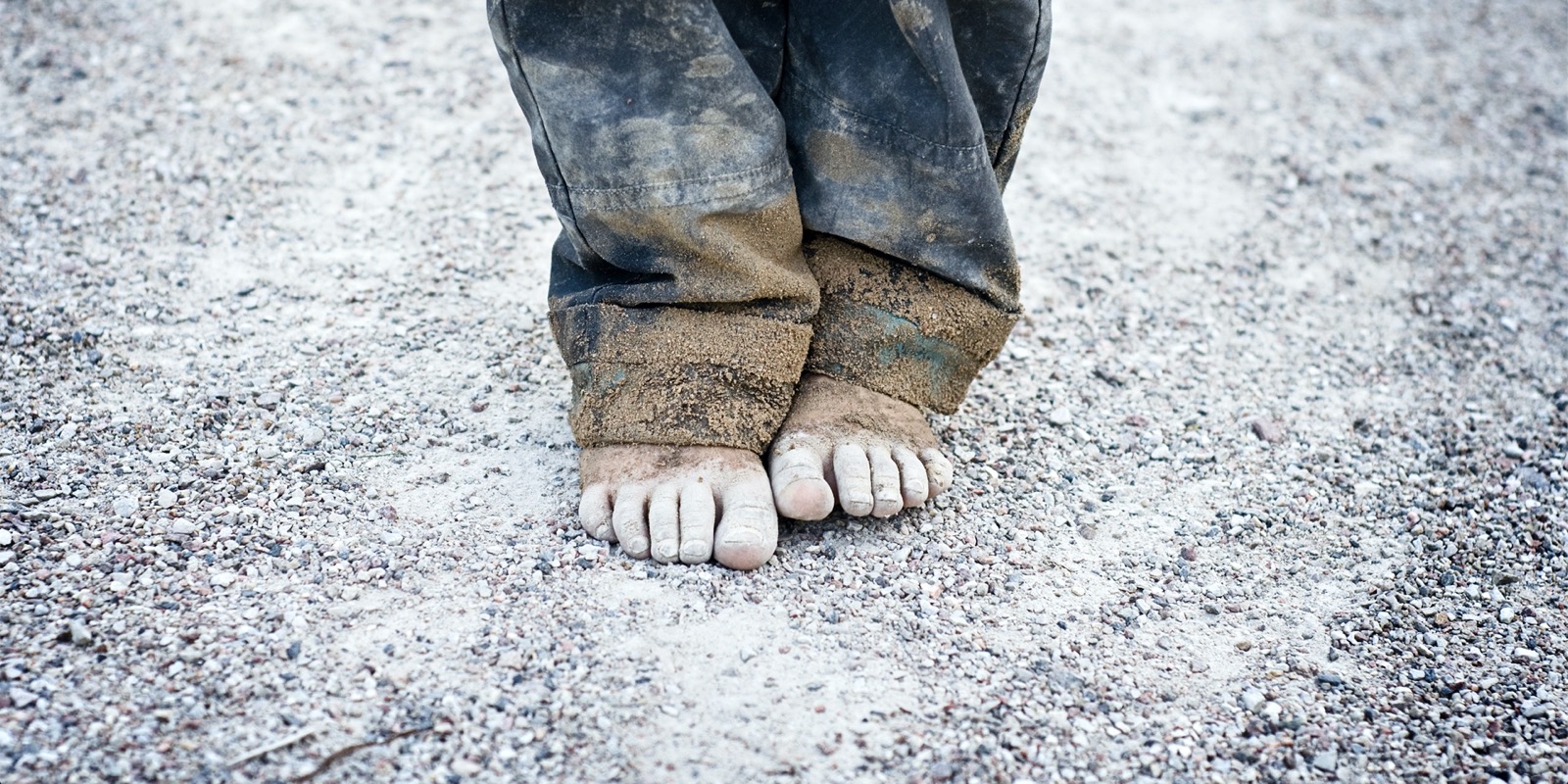A famine of biblical scale is already looming on the horizon, says David Beasley, director of the World Food Program. More than 30 developing countries could be affected by the scourge – 1 million people are already affected. It’s not just people going to bed hungry, Beasley insists, explaining that it’s a state of emergency where outside help is the only hope.
The world’s poorest people have already begun to feel the effects of the food crisis. Measures taken to slow the spread of COVID-19 have led to the closure of schools in 197 countries, causing some 369 million children to lose their school meals.
“The coronavirus has been anything but a great equalizer,” said Asha Jaffar, a volunteer who brings food to families in a slum in Nairobi, dismissing the widespread idea that we are all equal in the face of the threat of this new enemy.
Although food shortages are not a new phenomenon, and the world has already experienced severe food crises, they have been regional, caused by extreme weather events, conflicts or economic problems. During the pandemic, we can speak of a global phenomenon of food shortages, experts say, emphasizing that it is shaping the intersection of several factors generated by the health crisis and the disruption of the previous economic order, which overlap with older issues such as climate change, migration or armed conflict.
What poor people are experiencing now is a famine pandemic, “a humanitarian and food catastrophe,” Beasley says.
COVID-19 has created the perfect framework for a major economic crisis. And if the poor are hit hardest by this, the forecasts for the world’s strong economies are not very optimistic either.
From economic growth to recession
“It is very likely that this year the global economy will experience its worst recession since the Great Depression, surpassing that seen during the global financial crisis a decade ago,” Gita Gopinath, the IMF’s chief economist, said in the 2020 World Economic Outlook report. Gopinath said the current crisis does not resemble the others and that, similar to the case of a war or political crisis, “there is continued severe uncertainty about the duration and intensity of the shock.”
The latest forecasts from the IMF speak of a 3% contraction in the global economy, with a negative revision of 6.3 percent compared to the estimate made in January 2020. However, a 3% decline in the economy is a “happy” scenario, conditioned by the withdrawal of the pandemic in the second half of the year.
Also, if more conditions are met, such as the absence of large-scale bankruptcies, a low level of unemployment and the absence of systemic stress in financial markets, the global economy could grow by 5.8% in 2021. Growth would exceed the average recorded in the years before the pandemic, but in this scenario there are still “considerable uncertainties” related to the pandemic, the behavior of financial markets and the economic consequences of the health crisis.
With the exception of China, which could see an economic growth of 1.2% this year, all developed economies will shrink by 6% and emerging and developing countries shrink by between 1 and 2.2%.
The cumulative loss of GDP in 2021-2022 could reach 9 trillion dollars, which is slightly more than the economies of Germany and Japan combined. The global crisis will forgive no one, warns Gopinath, stressing the additional challenges facing emerging and developing economies.
The pandemic highlights the face of poverty in rich countries
The COVID-19 crisis amplifies the scale of poverty in the UK, where, according to official figures, 14 million people are facing poverty after a decade of austerity following the 2008 financial crisis.
The Economic Times wrote in early April that in the past two weeks, nearly 1 million people had turned to Universal Credit, the main form of government state aid, 10 times more than usual. The situation is described as “an unprecedented challenge” by the charity The Trussel Trust, which manages a network of 1,200 food banks.
“If families who were earning decent wages before the pandemic move on to the Universal Credit, they will very suddenly find themselves living in poverty,” said Louisa McGeehan, a director at Child Poverty Action Group UK.
In Spain, experts have warned that the poor, the elderly, the marginalized and people with low-paying jobs are disproportionately affected by the crisis generated by the new coronavirus, writes The Guardian. A map of the Catalan regional government, which followed the evolution of the spread of the virus, showed that the inhabitants of the poor neighborhoods of Barcelona had a 6-7 times higher risk of being infected, compared to those in the rich neighborhoods.
The “unprecedented” economic crisis triggered by the pandemic, as announced by the Bank of Spain, is hitting hardest on the poorest. The Puente de Vallecas district, one of the poorest and most affected by the epidemic in Madrid, is an illustration of how this double crisis is affecting vulnerable people. Some 230,000 people live in Puente de Vallecas, many of them immigrants from Latin America, Morocco and Eastern Europe. They are generally people who work in low-income sectors, and their jobs aren’t secure.
Patricia Dominguez is 55 years old, originally from Colombia and a widow. She was fired, as was her roommate, as soon as COVID-19 began wreaking havoc in the city. She receives shopping vouchers from the Red Cross, but she struggles.
“We eat a little. We live with a double fear of the virus and the economic crisis,” says the woman.
Spain did not expect such a large-scale health crisis, says Professor Manuel Franco of the University of Alcalá in Madrid, stressing that the decisions to be taken need to be built on existing social inequalities. Inequalities already were already accentuated before the pandemic — the income gap created a life difference of 7 and 11 years, respectively, between the richest and poorest residents of Madrid and Barcelona, according to a study published in 2019 by Oxfam Intermon.
If this is the face of poverty in developed European countries, what does it look like in already vulnerable regions? A recent report warns that the pandemic is a hammer blow for millions of people who have long been balancing on the edge of the financial abyss.
When hunger is a more frightening enemy than the virus
About 265 million people in low- and middle-income countries could face food shortages in 2020, almost double from the previous year, according to a report by the World Food Program, a UN agency.
Most people who fought the food crisis in 2019 live in countries affected by conflict (77 million), climate change (34 million) and economic crises (24 million).
In the previous year, Yemen, Congo, Afghanistan, Venezuela, Ethiopia, South Sudan, Syria, Sudan, Nigeria and Haiti were the countries affected by the worst food crises, hosting about 66% of the world population struggling with food insecurity. While 61% of South Sudan’s population suffered from food shortages in 2019, at least 35% of the population in countries such as Zimbabwe, Sudan, Yemen, the Central African Republic, Syria and Haiti faced the same problem last year.
Multinational companies in the food industry, in turn, warn that the number of people suffering from chronic hunger could reach 1.6 billion (double the current number).
The novel coronavirus amplifies existing problems and creates new ones, say experts, who fear that, for many, COVID-19 will largely affect societies more as an economic issue rather than one of health. Our way of living and working has changed overnight, and the measures taken to curb the spread of the virus have also affected food production.
Experts say the main concerns are with refugees and people in conflict zones (including those in northeastern Nigeria, South Sudan, Syria and Yemen).
The pandemic hit many millions of people hard, said Arif Husain, chief economist at the World Food Program, stressing that they “They did not need COVID-19. Even without it their lives were hanging by a thread,” Husain said.
The people and dramas hidden by statistics
Even if there is no global food shortage due to the pandemic, logistical problems related to planting, harvesting and transporting food will leave poor countries vulnerable, especially those based on imports, said Johan Swinnen, director General of the International Food Policy Research Institute, Washington.
The quarantine and lack of food led to protests and looting from Honduras to South Africa and India, writes The New York Times.
In Kibera, the largest slum in Kenya’s capital, the epidemic has thickened the ranks of those already starving. The despair of the people is so great that, when they received donations in oil and flour, they crowded in, determined not to run out of precious ingredients. Two people were killed and several more wounded in the stampede.
“We have no money and we have to survive. That means not eating much,” says Pauline Karushi, who lost her job and lives with her child and four other relatives in a two-room apartment.
The lack of food is ever more threatening in India, where many depended on the income they managed to raise daily. The lack of money has forced city dwellers to return to their rural home areas, triggering “the nation’s largest mass migration since independence,” said Amitabh Behar, Oxfam India’s chief executive.
“If you don’t even have a house, how can you work from home?” Ramchandran Ravidas wonders bitterly. He is 42 years old and is a rickshaw driver. He has no customers since the quarantine was established. Normally, on a good day, with lots of energy, he could earn up to 6 dollars. It is the first time in his life he can no longer earn a living and the first time he receives food from a charity. The man lives in the garage of the owner who rents him the rickshaw, and now he’s afraid he’ll be evicted, given that customers no longer use their services. “I’m not worried about the coronavirus; if it comes to take me, at least this miserable life will end,” Ravidas sadly concludes, after weighing his alternatives.
“No one dies of fever,” says one of the sayings circulating in the San Roque neighborhood of Manila, thus outlining, by exclusion, the image of the true enemy they fear. People are used to fever and cough in the neighborhood where petty crime, lack of food, congestion and lack of hygiene are common problems. However, traffic restrictions scare them more than infection.
Isolation “is a nightmare for people like us,” says Susan Baldoza, noting that in San Roque, people would rather die of infection than slowly succumb to starvation.
In addition to the pandemic, several African countries are facing a historic locust invasion. As early as January, the UN warned that grasshoppers posed an “extremely alarming and unprecedented threat” to food security and livelihoods. The pandemic is hampering efforts to combat this invasion, and two weeks ago, a second wave of locusts, 20 times the size of the previous one, hit the continent again.
“We expect the government, partners and the World Food Program to save us, coming to our aid with food. Otherwise, our people will end up starving, ”said Christine Apolot, mayor of Uganda’s Kumi District.
Those who have no one
The director of the World Food Program has already announced to the UN Security Council that 2 billion dollars in aid is needed as soon as possible because the situation of poor people in developing countries is deteriorating rapidly. Another 350 million dollars will be needed to transport food to crisis areas. This call comes in the context in which, at the end of 2019, experts predicted that “2020 will be the worst year since World War II“, before even the locust invasion has become a dramatic reality in Africa.
In the near future, the poorest states could face a difficult dilemma: save people from coronavirus or save them from starvation, according to the World Food Program report.
Starvation is preventable, says David Beasley. “If we get the money and keep the supply chains open, we can avoid hunger,” says Beasley, noting that “we are in this together.”
If developing countries fail to control the epidemic, the virus could become endemic, causing new outbreaks around the world, say 20 experts (including four Nobel laureates) who wrote to G20 leaders to warn them of the “unimaginable health and social impact” of the COVID-19 crisis in these regions.
Even if the indifference to the suffering of those on other meridians would cost us too much to afford, we still have an even stronger reason to intervene, says Arif Husain: “We’ve got to be there for these people, because if we’re not, nobody else is.”
Carmen Lăiu is a writer for ST Network and Semnele timpului.



















